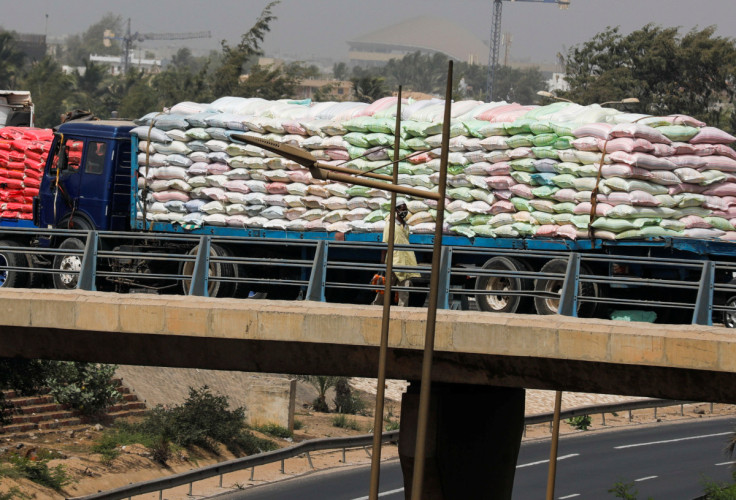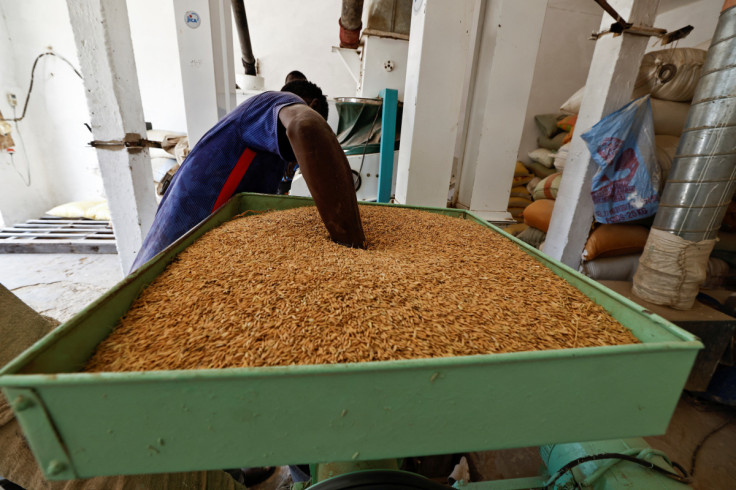Senegal Hones Its Home-grown Rice To Cut Dependence On Asian Imports

Senegalese cook Amy Gueye always tries to use imported rice at her family-run restaurant in Dakar, knowing that customers prefer the taste to home-grown varieties when they buy her spicy rice-based fish and chicken dishes.
Senegal's rice production has soared in recent years as it seeks to reduce dependence on imports, but the population across West Africa has also risen fast, meaning countries still rely on Asia for supplies, particularly of high-quality produce.
With concern growing over food security across Africa, prompted by trade disruptions caused by the pandemic and the war in Ukraine, that dependence is now in focus, particularly after key supplier India curbed rice exports last month.
Rice is the main source of calories for the Senegalese and has become a major staple across West Africa, where local production only covers around 60% of demand, according to the 15-member Economic Community of West African States (ECOWAS).
Even as global food prices rise, many people including Gueye's clientele still favour imports over the rice grown along the bends of the Senegal river valley in the north.
"If we cook rice from the valley, some customers might stop buying because of the stones and husks that could be in it," said Gueye, who with her sisters' help cooks 50 kg of rice each day in steaming vats.
West Africa's dependence on rice imports is a drain on foreign reserves, costing it around $3.7 billion in 2021, according to U.N. trade and development agency UNCTAD data.
It also exposes countries to global price volatility and trade disruptions, as when India - one of the top rice exporters to the region - banned exports of broken rice and imposed a 20% duty on exports of various other grades in September.
Senegal, which sourced around two-thirds of its rice imports from India last year, was sufficiently worried for President Macky Sall to call for talks with India over the move.
India restricted exports because of its own fears that food shortages could fuel rampant inflation at home. Since its Sept. 8 decision, it has allowed some broken rice shipments backed by letters of credit.
GROWTH SPURT
Like other countries in West Africa, Senegal ramped up rice production after a global food price crisis in 2007-8 led to public unrest and a renewed drive to reduce reliance on imports.
Senegalese rice output more than tripled between 2011 and 2020 to 1.3 million tonnes.
But rapid population growth and a growing preference for rice over other grains saw apparent consumption more than double in the same period to over 1.9 million tonnes, UNCTAD estimated, using data from the UN Food and Agriculture Organisation.
"Different countries have done better than others, but the general picture is still quite similar to before the (2007-8) crisis, because you still have enormous imports of rice," said Johanes Agbahey, an agricultural economist based in Ivory Coast.
Trade flows within the region were distorted by countries having different tariffs, he added, while improved productivity and quality could also help reduce dependence on imports.
That is already happening in northern Senegal, where neat paddies form a green mosaic in the riverside flatlands near the town of Dagana.
There, the Japanese development agency JICA has been helping the Senegalese rice sector for more than a decade.
Improving the value chain by helping to cut production costs and improve quality - unbroken kernels, less grit - is the focus of the current phase of the JICA project.
"There's no difference in the potential for growing rice in Senegal compared with Japan," said Yoshihiko Ogata, team leader for the phase. He said some fields were yielding the second crop of the year as a result of Japanese irrigation and harvesting techniques to boost productivity.
"With more land farmed for rice, good seeds and high-performance machines, we can produce much better quality rice and Dakar folk, for example, would no longer buy imported rice," said Codou Diop, head of a local seller's association.
But even with significant leaps in productivity, West Africa's rice sector is set to remain under pressure from the appetites of a growing population.
The region's rice consumption is forecast to hit 22 million tonnes by 2025, a nearly 40% increase on 2017, according to ECOWAS, whose "Rice Offensive" envisages the region achieving rice self-sufficiency.
Back in Dakar, customers at Gueye's restaurant line up during the lunchtime rush, eyeing platters of sticky chicken yassa and other dishes piled high with rice.
Gueye said she would love to support the economy by cooking local rice. "But imported rice is better, and that is what our customers want," she said with a shrug.

© Copyright Thomson Reuters 2025. All rights reserved.





















